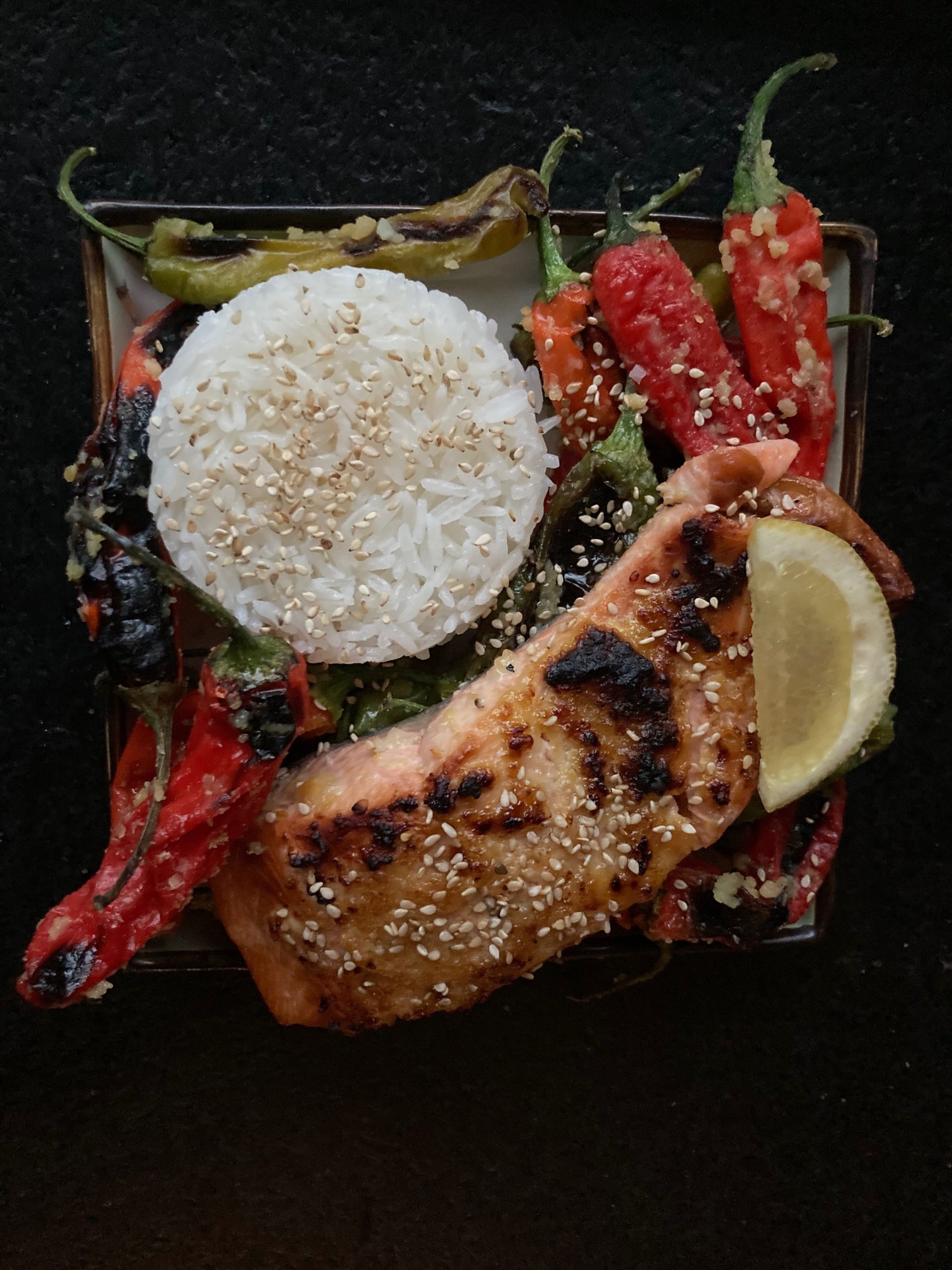Word File: shishito peppers
Overdue Praise for the Shishito
It wasn’t love at first bite, but I finally warmed up to the shishito pepper.
The name is an abbreviation of shishitogarashi, which is Japanese for “the tip of this pepper looks like a lion’s face.” This description is as fanciful as looking for faces in clouds, but you don’t need to imagine a lion in order to appreciate the shishito.
Shishitos are finger-length, thin-skinned, wrinkled, and usually mild, but every now and then you’ll get a hot one, which keeps things exciting. My introduction to this pepper came at the farmers market in Santa Fe, New Mexico, where growers bill them as “frying chiles.”
This distinction is important because roasted green chile is a sacred autumn tradition in New Mexico, where chile roasters are everywhere, in seemingly every parking lot and empty space. These propane-heated rotating steel mesh cages resemble giant hamster wheels. As the hot roaster spins, the chiles inside are tossed and cooked until they are collapsed and blistered, releasing their intoxicating fragrance into the air. Locals call it New Mexican aromatherapy. It makes everybody within smelling distance happy and hungry.
Roasted green chile is arguably the backbone of New Mexican cuisine, thanks to a simple and delicious formula: add green chile to food, and add the phrase “green chile” to what you call it. Thus, a cheeseburger becomes a green chile cheeseburger. Scrambled eggs become green chile scrambled eggs. Enchiladas become green chile enchiladas.
At the Santa Fe farmers market, shishito growers have skillets in their stalls which they use to demonstrate the shishito’s fryability. They fry their shishitos in a few drops of oil, and put them on plates for customers to sample. I was one such sampler, and I was not impressed. The frying thing seemed like a gimmick, and didn’t fill the air with as much fragrance as traditional New Mexican chile varieties like Big Jim, Sandia and Numex. It took a farmer in Montana, where I now live, to turn this perception upside down. And all he had to do was let the shishitos ripen.
Any pepper will eventually turn red if you leave it long enough, and my farmer friend waits until his shishito crop resembles a Christmas sweater before bringing his red and green mix to market. The red shishitos add a pleasing sweetness to the mix, making it more complex. Finally, after years of denial, I hopped aboard the shishito bandwagon.
Back in Santa Fe the lower heat of the shishito was a turn-off, but now that I’m older and have less to prove, I don’t mind milder chiles, because I can eat more of them. And without being surrounded by chile roasters on every corner as one is in New Mexico, I’ve noticed that blistered shishitos actually smell pretty good. With the help of my friend’s red and green shishitos, I’ve been converting my burgers, eggs, soups and pretty much everything else within reach into New Mexican-style cuisine.
Here is a recipe for lemon miso shishitos that brings us full circle to the pepper’s Japanese roots. It’s based on the blistered shishitos on the menu at the acclaimed Nobu restaurants. I’ve added salmon, to make it a complete meal rather than an appetizer, and because the lemon miso glaze is a perfect sauce for salmon. I serve the shishitos and salmon with jasmine rice rather than Japanese rice, because jasmine rice adds a lovely fragrance that dances elegantly with the aroma of the shishito.
This recipe employs white miso, which I greatly prefer to the darker varieties. White Miso contains rice fermented with the usual soybeans, which makes for a sweeter paste into which I will liberally dip my spoon and snack on while making this dish. And while shishitos are sold as frying chiles in New Mexico, I prefer my shishitos broiled.
Lemon and Miso-glazed Shishitos with Salmon
Combining elements of East and Southwest, this transcontinental recipe is so delicious that you won’t know where you are.
Serves 2
1 pound salmon filet, preferably cut from the thick end
1 pound fresh shishito peppers, washed and dried
¼ cup white miso paste
The juice of one lemon
½ teaspoon salt
1 tablespoon butter
3 tablespoons sesame seeds
Soy sauce, to taste
Jasmine rice
Turn the oven to broil. Position an oven rack about seven inches below the element or flame.
Combine 2 tablespoons lemon juice and the miso, and stir together until completely mixed.
Sprinkle the fish with salt. Let sit for 15 minutes, then rinse it with the remaining lemon juice. Smear the fish with half of the lemon miso mixture. Let it sit in the fridge until it’s time to cook it.
Rinse the shishitos and put them on a baking pan. Roast them under the broiler, tossing and stirring often, until they are blistered on all sides – about 12 minutes. Remove from the oven to cool. (You can roast any chile this way, including New Mexico-style, Anaheim, poblano, Jalapeno, etc.)
Put half of the butter on the salmon and place the fish in an oven pan under the broiler, skin-side down, and cook until browned on top and solid to the touch – about ten minutes. Remove and let cool.
Toss the shishitos with the remaining lemon/miso paste and the remaining half-tablespoon of butter.
Plate the shishitos and salmon with rice, garnish with the sesame seeds and a lemon wedge, and serve with soy sauce.
